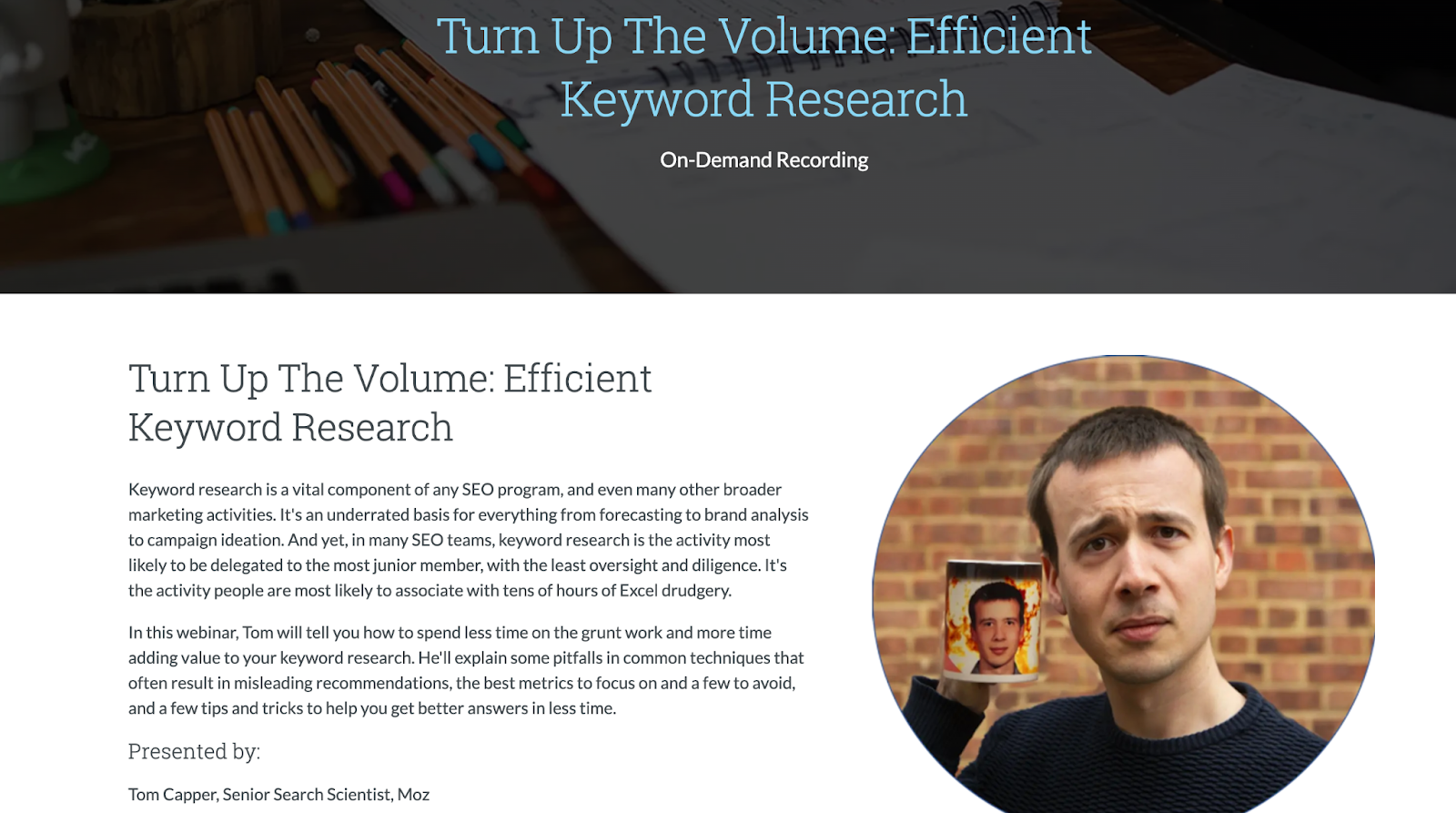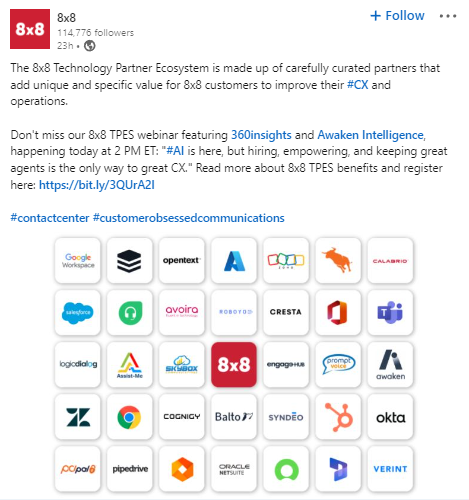Sales webinars can be great marketing tools — if you know how to run them effectively.
That said, it’s not as simple as joining a call and chatting about your product. Instead, hosting a webinar is a step-by-step process that starts with comprehensive planning, followed by content creation, and finally a strong webinar promotion strategy.
Here, we’ll explore the benefits of sales webinars and how to host them successfully!
Are sales webinars still effective?
The digital landscape is continuously evolving. But one element that looks set to remain relevant is video content. Particularly in the business world, video content significantly influences consumer behavior.
According to Google, over 70% of viewers say they learn more about new brands via YouTube. This means prospective customers use it to find video content about brands, products, or services.
In addition, businesses across a variety of industries report success with audience engagement, lead conversion, and overall revenue growth through video content. For example, MOZ, an SEO service agency, grew a 500,000-strong online community by leveraging a content marketing webinar strategy.
The company hosts on-demand webinars, which it uses to educate its audience on various SEO tricks, tips, and best practices. Not only do their webinars attract significant engagement from existing and new customers but they also bolster Moz’s credibility as an expert SEO service provider, increasing its prospects and opportunities to acquire new customers.

Source: Moz
How you can scale your business with sales webinars
Want to grow your brand like Moz did? Below are a few ways webinars can improve your sales prospects.
Lead generation and nurturing
Webinars are powerful tools for lead generation. They’re perfect for attracting the right audience, and you’ll have access to their contact information after the webinar thanks to the sign-up process.
Beyond that, webinars are also great for continuously engaging leads and showing them why they should do business with you. This lead nurturing process allows you to use continuous interaction to progressively convince a prospect to become a customer.
The Moz example above portrays this benefit incredibly. The company uses its specially curated webinars to attract its ideal audience and nurtures the leads into paying customers while retaining existing ones.
Building brand awareness
Google's report showed that more people are discovering new brands via video-sharing platforms like YouTube. Couple this fact with the growing popularity of video content, and you have a recipe for a brand awareness explosion.
Generally, webinar content not only educates but also promotes the brand. For instance, let’s say you operate a contact center as a service (CCaaS) solution.
If you run webinars about effectively using KPIs in contact centers, or about the best training methods for agents, you can also mention how your software can help. Additionally, the audience will associate what they learned with your brand - increasing brand recognition.
Driving sales and revenue
In addition to building leads and driving brand awareness, webinars are excellent for closing prospects. Videos are perfect for showcasing product use cases, specific advantages, and features — all of the information customers need to make a buying decision.
You can also maximize revenue through upselling and cross-selling opportunities presented during webinars. Webinars let you engage potential customers in real time. That way, you can answer all their questions and immediately address their objections about the products.
Answering questions is an excellent opportunity to tailor your sales pitch on the fly and portray your product as the perfect solution to the prospect’s needs.
Step-by-step guide to hosting webinars
There’s no one-size-fits-all procedure for hosting Webinars. How you host your sales webinar may differ from how your competitors do theirs. Ultimately, you should identify what works best for your business and go for it. That said, there are a few strategies that can help everyone:

Planning and preparation
You can’t create webinars on a whim or without a proper plan. Before hosting it, you must consider several variables affecting the event’s overall turnout. Start by identifying all the variables contributing to your webinar’s effectiveness.
You should factor in:
-
Your overarching webinar strategy
-
What your goals or objectives are
-
Which webinar platform you're on
-
Who your target audience is
-
The team behind the webinar (host, moderator, guests, etc.)
To learn more, read our full guide on Webinar Planning!
Content creation
Creating the content will be much easier once you’re clear on your goals. Obviously, since it’s a sales webinar, your primary purpose should be growing your business and boosting sales.
However, you must avoid making your content too “salesy,” as this can be off-putting for most potential customers. Your initial objective should be to build the audience's trust in your product/service as the solution to their needs.
Focus on creating content that balances education and promotion. Make sure you’re providing value, not just promotion. Let’s return to our CCaaS example. Rather than simply hosting a webinar about your specific product, you could offer the audience a range of helpful resources.
For instance, you could tailor the content around the general question “what is contact center technology” and then drill down into your product as an example.
This type of webinar is best suited for those early in the sales journey, but it’s also a good idea to host webinars for existing customers — especially if your product is subscription-based.
So, for this CCaaS example, you could offer post-sale webinars about the best ways to use the software. This can build trust in your brand and help reduce how many questions your customer service team may have to field.
Promotion and marketing
Once you have your plan and content ready, the next stage in the webinar hosting process is the publicity. This is where you promote the webinar to your target audience and encourage them to sign up for it.
As well as highlighting it on your website and email marketing campaigns, consider posting it across multiple channels, such as social media. Depending on your content, you may also be able to collaborate with influencers or partners to broaden your reach.
This is a particularly useful technique if your webinar features guest speakers, as you can reach their audience as well as your own.

Source: 8x8
Technical setup
Faulty or malfunctioning equipment can ruin your webinar. That’s why you must ensure that all equipment and internet connections for the event are reliable.
-
Get the best equipment available within your budget
-
Setup and do multiple test sessions before the actual webinar date
-
Plan and create contingencies for every possible mishap
-
Get spare equipment and, if possible, have an alternate setup
-
Have qualified staff in charge of all equipment
Remember, the technical setup also includes the visual and audio aspects of the webinar, not just the equipment. Create a visually appealing presentation with good-quality audio to make the webinar more engaging for the audience.
Hosting the webinar
So, you have your content ready and equipment in place, and it’s time to start. Don’t expect the event to progress on cruise control from here on. You still have a lot of work to do to ensure everything goes according to plan.
-
Do a tech check: Technology can make or break engagement levels. And while some technical difficulties are impossible to avoid, you want to minimize them as much as possible, particularly during a live event. Run an internet speed test, make sure you have a backup power source if hosting from a laptop, test your microphone and camera, and make sure you have appropriate lighting.
-
Rehearse! Doing a run-through of your webinar will help you feel more confident in your presentation. It’s also the perfect opportunity to check all of your hardware and software is in working order. This includes presentations, videos, and screen sharing. Consider roping in a colleague or friend for this. Ask them to log in the same way an attendee will later in the day and make sure they can see and hear everything clearly.
-
Send a reminder: Sending an email to those who have registered can increase attendance rates. Don’t forget to include the time, link to join, and any other details such as resources or hashtags you want them to use if sharing your webinar on social media. If registrations are still open, this is also a great chance to secure last-minute attendees.
Post-webinar activities
A sales webinar's ultimate goal is to grow your business by selling your products or services to your target audience. But in most cases, the audience won’t start buying or subscribing to your services immediately. Instead, the event mainly makes them open to doing business with you.
You have additional work to do to convert the audience into customers. As such, you must follow up with the audience after the webinar. For example, you can write follow-up emails with special offers to incentivize attendees to make a purchase or book a sales call.
There are three types of emails to include in your webinar sequence:
-
Confirmations. Registration confirmation emails let registrants know that they've successfully registered for your webinar. They also give registrants the opportunity to save the event to their calendar — either as an embedded invite or an ICS file.
-
Reminders. Reminder emails ensure that registrants don't forget about the webinar they've signed up for. The best practice is to send a reminder email one week, one day, and two hours before the event date.
-
Follow-ups. Follow-up emails are sent after the webinar to provide the replay link, showcase highlights, address objections, and convert any leads who weren't ready to take the next step during the presentation itself.
In addition to that, you should analyze webinar performance metrics for insights to iterate and improve future webinars.
Grow your business with sales webinars
Sales webinars are great tools for scaling businesses and improving profitability, as long as you plan them properly — so be sure you take the time to map out exactly what you want to achieve to increase the odds you achieve your desired outcome.
Once you’ve successfully run one, don’t forget to look back and analyze what worked and what didn’t. By constantly planning, analyzing, and reassessing, you can ensure your webinars provide the audience with value, and your brand with sales.








